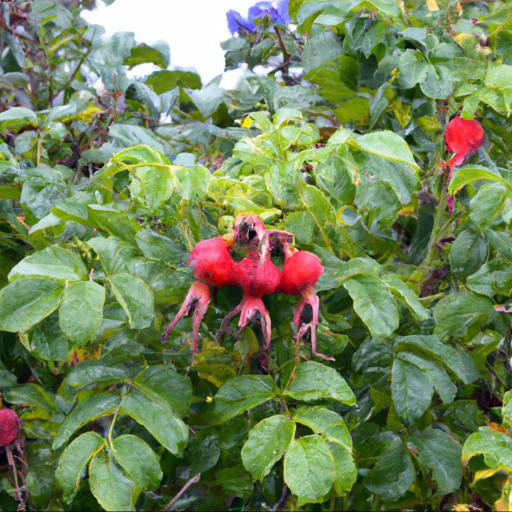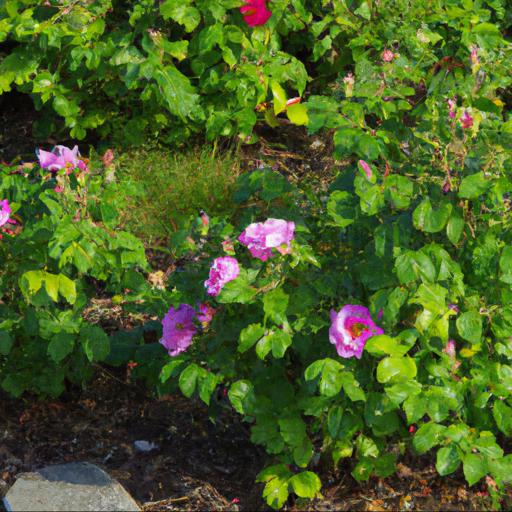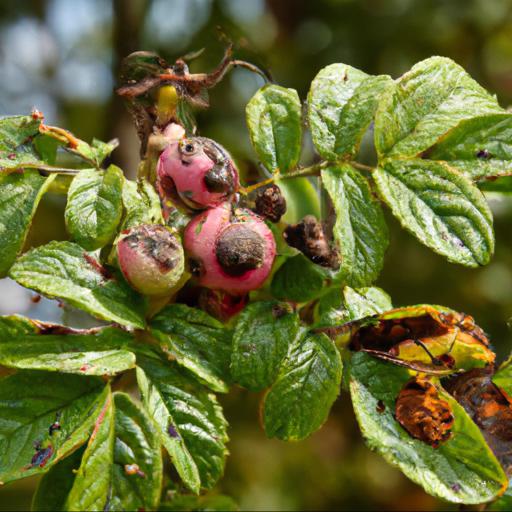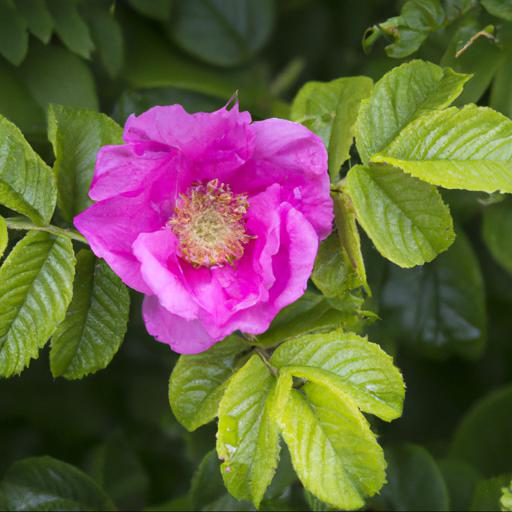Rosa rugosa is a species of rose native to eastern Asia, including Japan, Korea, and China. It is a deciduous shrub that produces fragrant, pink flowers with large, bright-colored hips.
Rosa rugosa is an attractive and hardy plant that is easy to care for and can be used in a variety of landscaping and garden designs. It is also a popular choice for hedges and borders and can be used to attract wildlife. The plant is drought-tolerant and can tolerate a wide range of soils, making it a great choice for gardeners of all skill levels.
The benefits of growing rosa rugosa

A rose is one of the most popular flowers in the world, but the Rosa rugosa stands out from the rest. This species of rose is renowned for its hardiness under various conditions and bountiful blooms.
Not often found in garden centers, the Rosa rugosa can be found natively in some areas of the United Kingdom and even in wild patches across the isles. As an avid gardening expert in the UK, I have some advice on why you should consider incorporating these hardy and breathtaking roses into your garden. Rosa rugosa come in an abundance of colors, from pink to white, with all of the hues in-between.
They are also highly fragrant and easy to care for, with tolerant attributes when it comes to soil, temperature, and water. Unlike other rose species, the Rosa rugosa only requires occasional trimming and thinning, making it a great choice for even the busiest gardeners or those with less-than-perfect green thumbs. Something unique about the Rosa rugosa is their edible fruit.
The hips, or seed pods, are often eaten raw or made into jams, jellies, and juices for a plethora of culinary applications. Beyond food, the hips are also popular in cosmetics, tinctures, and herbal teas.
With all of these uses, they offer both taste and beauty to any garden. The Rosa rugosa is a beautiful, hardy, and abundant rose species perfect for any UK garden. From savory snacks to eye catching scenery, it is an ideal addition to any shrubbery.
Whether planted alone or in colourful clusters, these roses will make a statement in any lawn and garden.
Tips for planting and caring for rosa rugosa

Rosa rugosa, often referred to as the Japanese rose, is a species of rose that is native to Japan and Eastern Asia. Its impressive and fragrant flowers attract butterflies and its unique foliage is reminiscent of a Japanese garden.
Despite the plant’s rugged roots, it is surprisingly care free, making it a great addition to any garden. In order to ensure that your Rosa rugosa plants are growing strong and healthy, proper planting and care are essential. When you first receive your plants, it’s important to get them into the soil right away.
When planting, dig a hole no more than twice as deep as the height of the roots and larger than the width of its transplant container. This will make sure your plants are not planted too deep and that their roots will be able to expand.
Make sure to fill the hole up with soil and press down firmly to ensure it is in direct contact with the roots. When caring for your Rosa rugosa plants, proper watering is the most important part. Water the plants once a week and avoid getting the leaves and blooms wet.
If you do get water on the leaves, make sure to wipe them off with a damp cloth as soon as possible to avoid fungal diseases. Fertilize your Rosa rugosa plants once every two months with a general-purpose fertilizer.
During the summer, you can deadhead your roses to reduce the amount of foliage and to promote more flowers. Lastly, prune the roses in the early spring to remove dead and damaged branches and to create a tidy, attractive shape. By following these tips, you can successfully plant and care for your Rosa rugosa to make your garden bloom with its bright color and fragrant aroma.
With the right level of attention and care, your Japanese roses will be sure to flourish and make your garden unique and beautiful.
Common pests and diseases of rosa rugosa

When it comes to Rosa rugosa plants, it’s important to be aware of the potentially common pests and diseases that can plague your hardy shrubs. As a UK garden expert, I’m here to help you figure out what to look out for and how to protect your rosa rugosa plants against whatever nature throws their way.
The most common pests and diseases of Rosa rugosa plants include rose rosette virus, Japanese beetles, and scale insects. This virus is spread mainly by a small mite, called an eriophyid mite, and causes the plant to become deformed and die quickly. The other two mentioned above, the Japanese beetles and scale insects, both enjoy the juicy leaves of Rosa rugosa.
The Japanese beetles will eat away at the foliage and can cause significant damage, so it’s important to get rid of them as soon as you notice them. Scale insects, on the other hand, can cause severe damage as they feed on the sap from the leaves and stems, which can cause the leaves to develop yellow spots and drop off. To protect your Rosa rugosa plants from these pests and diseases, regular maintenance and proper care are essential.
Try to keep the area around the plants free of debris, like dead leaves and branches, which can provide food and shelter to the pests. It’s also important to regularly inspect your plants for signs of pests and remove them as soon as possible.
Additionally, if you notice any yellowing of the leaves or other signs of disease, it’s important to prune away the affected parts as quickly as possible to limit the spread of the disease or pests. With these simple tips, you can help ensure that your Rosa rugosa plants stay healthy and safe from some of the most common pests and diseases. So, don’t forget to inspect your plants regularly, take timely action for any signs of the pests and diseases, and keep the area around the plants clean and clear of debris to provide your beloved shrub with the best chance of success.
Creative ways to use rosa rugosa in the garden
Rosa rugosa is a species of rose favored for its dramatic, colorful blooms and fragrance that can enliven a garden in any season. The sturdy plant is also capable of growing in a variety of soils and climates, making it a versatile choice for many budding gardeners.
Creative ways to use rosa rugosa in the garden include adding accents to the landscape or growing it as a specimen plant. Add accents to the landscape with Rosa Rugosa – There are creative ways to use Rosa Rugosa in the landscape to add attractive accents. It is foolproof to train the plant to various shapes and sizes for ornamental appeal.
Shrubs can be coaxed into green living walls with string and ogee created easily with a short hedge. If a hedge isn’t desired, groups of plants can be placed together to create a unique focal point with rambling, arching branches that accent the landscape.
These arrangements can be enhanced by surrounding with other perennial plants or flower colors to complement the hues in the roses. Grow Rosa Rugosa as a specimen plant – Rosa Rugosa is a great contrasting plant for any garden. By growing it as a specimen plant, the most dramatic blossoms can be seen when planted as an isolated accent in beds and borders, making Rosa Rugosa the highlight of a garden.
Furthermore, standing alone, the plant receives the most attention, especially when the colors and textures are most vibrant in the heat of summer. The striking colors and scent will make any area seem alive and inviting. These creative ways to use Rosa Rugosa in the garden will give it a unique appeal that only roses can offer.
By taking advantage of the versatility of this species of rose, you can create a garden oasis that blooms in any season, has plenty of color and is sure to attract attention. Along with its durability and adaptability, there is no doubt this rose will be a standout in any garden.
Our video recommendation
Final Touch
Rosa rugosa is a hardy deciduous shrub native to eastern Asia. It is valued for its fragrant flowers and colorful hips, which are edible and rich in Vitamin C. This shrub can tolerate salt and drought, making it ideal for coastal areas.
It is also a popular choice for hedges and borders, as it is low maintenance and easy to care for. Rosa rugosa is a great addition to any garden, providing color and texture all year round.
FAQ
What is the scientific name of Rosa rugosa?
The scientific name of Rosa rugosa is Rosa rugosa Thunb.
What are the common uses of Rosa rugosa?
Rosa rugosa is commonly used for ornamental purposes, as a hedge or border plant, and as a source of rose hips for medicinal and culinary uses.
What are the characteristics of Rosa rugosa?
Rosa rugosa is an ornamental shrub with a rounded, spreading habit and fragrant, single or double flowers. Its foliage is dark green and glossy, and its hips are large and showy. It is an extremely hardy and vigorous plant, tolerant of salt spray and wind, and it is also drought-tolerant. It is an excellent choice for hedges and borders, and it can also be used as a groundcover.
Where is Rosa rugosa native to?
Rosa rugosa is native to eastern Asia, including Japan, China, and Korea.
How is Rosa rugosa propagated?
Rosa rugosa is propagated by seed, cuttings, or layering.
What are the benefits of Rosa rugosa?
The benefits of Rosa rugosa include its fragrant flowers, edible fruits, and its ability to attract pollinators. It is also a hardy shrub that is salt-tolerant and can withstand harsh weather conditions. Additionally, it is an excellent choice for erosion control and can be used as a hedge or windbreak.

